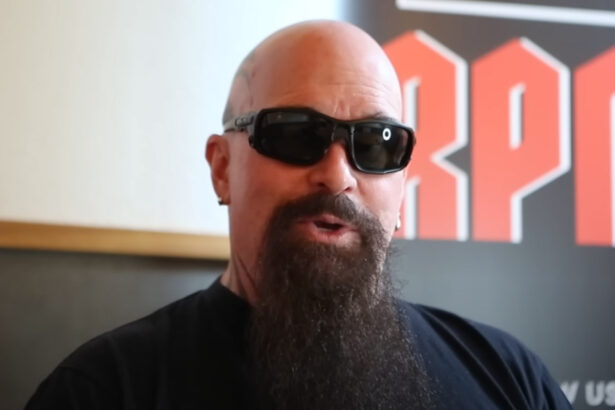Church of Misery’s ‘Master of Brutality’ represents a fusion of true crime and doom metal. Each track explores the stories of infamous serial killers through heavy riffs and doom-laden atmospheres.
Metal Archives documents the album’s recording at Los Angeles Club Studio in Tokyo. The lineup featured Yoshiaki Negishi on vocals, Tomohiro Nishimura on guitar, Tatsu Mikami on bass, and Junji Narita on drums. The production team created a heavily distorted sound. This approach perfectly matched the dark themes in the lyrics and created an immersive listening experience.
Southern Lord Records released ‘Master of Brutality’ in 2001. Helldriver Magazine notes how the album’s approach to exploring dark themes through true crime has influenced many bands in the genre. The record’s bold combination of historical documentation and musical intensity established its lasting impact. So, why not take closer look at the tracks and the killers that inspired them?
1. Killifornia – The Ed Kemper Chronicle
‘Killifornia’ opens with a chilling sample of Ed Kemper’s own voice, which brings an eerie authenticity to the song. Known for his articulate and calm demeanor during interviews, Kemper’s portrayal contrasts with the brutal nature of his crimes.
Between 1972 and 1973, Kemper murdered six young women, his mother, and her friend. He had a fascination with power, often claiming that his crimes gave him a sense of control over his own life and his surroundings. The music’s heavy, distorted riffs echo Kemper’s internal chaos and the monstrous acts he committed, perfectly matching his cold, detached persona.
2. Ripping Into Pieces – The Yorkshire Ripper
The song uses a surprisingly methodical rhythm to mirror the calculated and deliberate nature of Peter Sutcliffe’s crimes. Known as the Yorkshire Ripper, Sutcliffe murdered thirteen women and attempted to kill seven others over a span of five years.
His brutal attacks were spread across the north of England, often targeting women working as prostitutes. The track’s measured pace contrasts with the graphic violence Sutcliffe inflicted, highlighting the tension between the outwardly calm surface of his personality and his horrific actions.
Church of Misery’s riff-heavy yet restrained approach symbolizes Sutcliffe’s slow, predatory movements as he stalked his victims. The rhythm and tone suggest a twisted duality within Sutcliffe’s own delusions—he was convinced that he was chosen by God to rid the streets of ‘fallen women.’
3. Megalomania – Herbert Mullin’s Delusions
‘Megalomania’ pairs triumphant guitar work with disturbing lyrics, a fitting representation of Herbert Mullin’s delusions of grandeur. Mullin, who killed 13 people in California during the early 1970s, believed that his murders would prevent natural disasters, including earthquakes. His belief in his own power was central to his actions, making him a true product of his psychosis.
The song’s layered guitar work emphasizes his delusions, as if to suggest that Mullin’s warped worldview was a twisted symphony orchestrated by his mind. The track’s grandiose tone mirrors Mullin’s self-perception as a savior, while the underlying darkness of the music represents the real-life consequences of his psychotic beliefs.
4. Green River – An Instrumental Tribute
‘Green River’ serves as a haunting instrumental tribute to Gary Ridgway, known as the Green River Killer. Convicted of 49 murders, Ridgway’s reign of terror in Washington state spanned over two decades, primarily targeting women.
The absence of lyrics in the track reflects the impersonal, methodical nature of Ridgway’s killings, where he often left no evidence behind. The instrumental piece feels like a chilling representation of the monotony and cold efficiency with which Ridgway carried out his crimes over the years.
5. Master of Brutality – The Killer Clown
The eleven-minute title track of ‘Master of Brutality’ delves deeply into the horrors of John Wayne Gacy’s life and crimes. The heavy, oppressive riffs in the song parallel the sinister atmosphere that enveloped Gacy’s home. His ability to maintain a mask of normalcy while committing unimaginable horrors is represented in the seamless transitions between the track’s darker and more upbeat sections.
Gacy, known as the Killer Clown, murdered at least 33 young men and boys in the 1970s, hiding their bodies in his home. The track’s length and shifting musical landscapes reflect Gacy’s dual life—on one hand, he was a well-liked community member, hosting parties as his alter ego ‘Pogo the Clown.’ On the other, he was a sadistic murderer who lured his victims with promises of work or money, only to brutalize and kill them.





